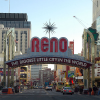
Referred to simply as Red Lake in Hillerman's fiction, this small trading post and rest area off of US Highway 160 (referred to in the book by its former name, Navajo Route 1) sits below the rim of Black Mesa. It should not be confused with the actual body of water, Red Lake, to the east, on the Arizona-New Mexico border. The Trading Post was founded around 1878 in a town that is now known as Tonalea. The post is well known for its Navajo rugs.
A trading post is an establishment where goods can be traded. It is also a social center where news and gossip are exchanged. Trading posts have been associated with American frontier culture since seventeenth century. Overtime, trading posts developed into a cultural institution, at first funded and backed by empire, later by national interests, and most often by enterprising business men. Trading posts became centralized hubs in a network of exchange that both participated in and circumvented the burgeoning capitalist system that was imported into the Americas along with settler colonialism. Although trading posts were initially intended to provide support to the European traders and trappers who traced their way over the North American continent, Native American groups were also drawn into the posts' exchange network, trading furs, pelts, and even scalps for finished goods such as steel knives, firearms, woven textiles, and food stuffs, including alcohol. Although not every post was poorly managed, trading posts earned a nefarious reputation for taking advantage of Native traders, by offering poor exchange rates, trading with products that were infected with diseases, and promoting the purchase and use of alcohol. Many trading posts are still in existence, and in the Southwest, they still mark "the frontier," as they are located, as they have been for centuries, at the dividing line between wilderness, Indian country, and reservation lands, on the one hand, and settled, ordered, and contained "civilization," on the other hand. Today, however, trading posts can be reached by pickup truck, tourist RV, and even the occasional horse. Many trading posts are also preserved as National Historic Sites.









